Abstract
One of the most controversial areas in the management of malignant melanoma concerns the efficacy of prophylactic lymph node dissection. During a retrospective computer-aided data review of over 3000 melanoma patients referred to the Duke University Cancer Center, 613 patients with complete staging along with surgical and pathologic data, having trunk and extremity melanoma, were identified with Breslow thickness in the range of 0.76 to 4.0 mm. One hundred eighty-seven of these clinically node-negative patients received an elective lymph node dissection (WLE/ND). The remaining patients were treated only with an initial wide local excision (WLE) at the time of diagnosis of their melanomas. There was no difference in age at diagnosis or male-female ratio between the treatment groups. A higher percentage of the WLE/ND group (36% vs. 31%) showed ulceration of their primary lesions and a greater mean tumor thickness (1.81 +/- 0.80 mm vs. 1.60 +/- 0.73 mm) than the WLE patients. Despite the force of these two adverse prognostic factors in the WLE/ND group, only ten deaths (5%) have occurred in the elective lymph node group compared to 51 (12%) in the control group. Using a multifactorial analysis to control for the prognostic contribution of the two most informative variables in stage I melanoma, Breslow thickness and ulceration, WLE/ND had an independent favorable effect on survival (p = 0.01). There was no apparent additional benefit to lymph node dissection in patients whose primary lesion measured less than 0.76 mm or greater than 4.0 mm in thickness. The surgeon may use survival estimates with and without elective node dissection based on a prognostic equation ("prognostigram") as a quantitative aid to treatment planning.
Full text
PDF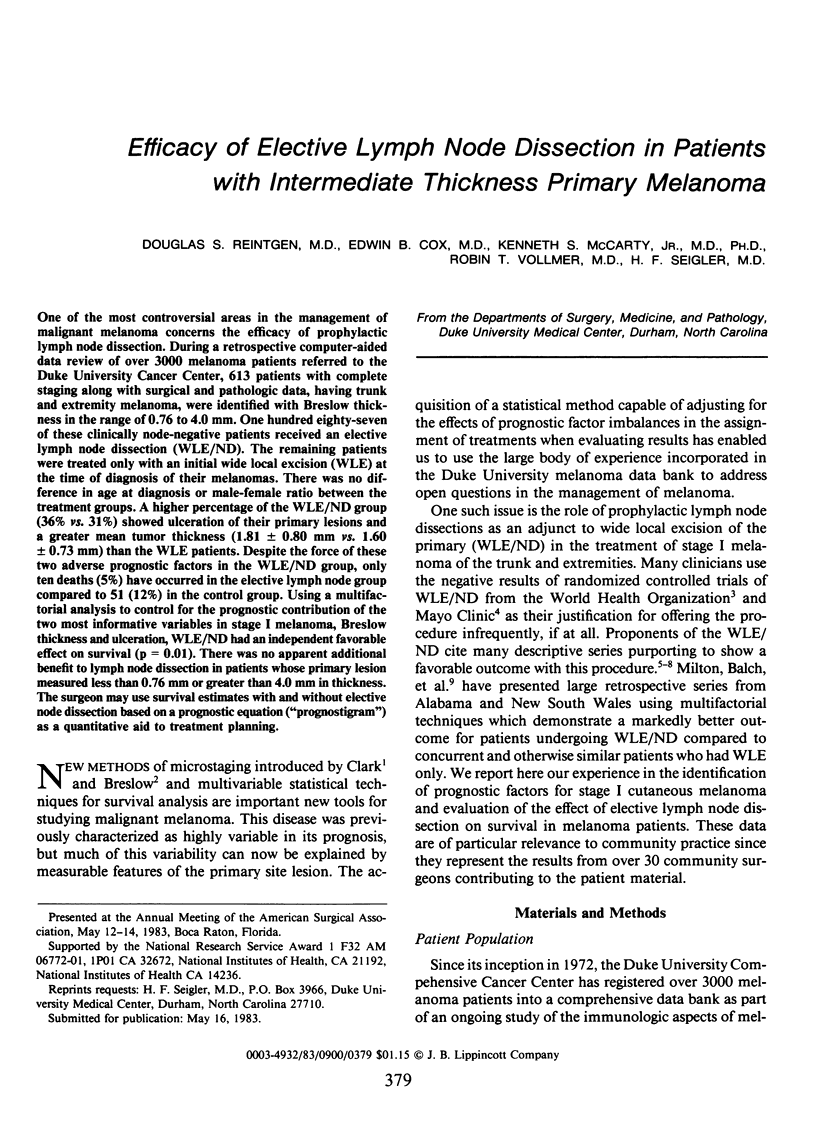
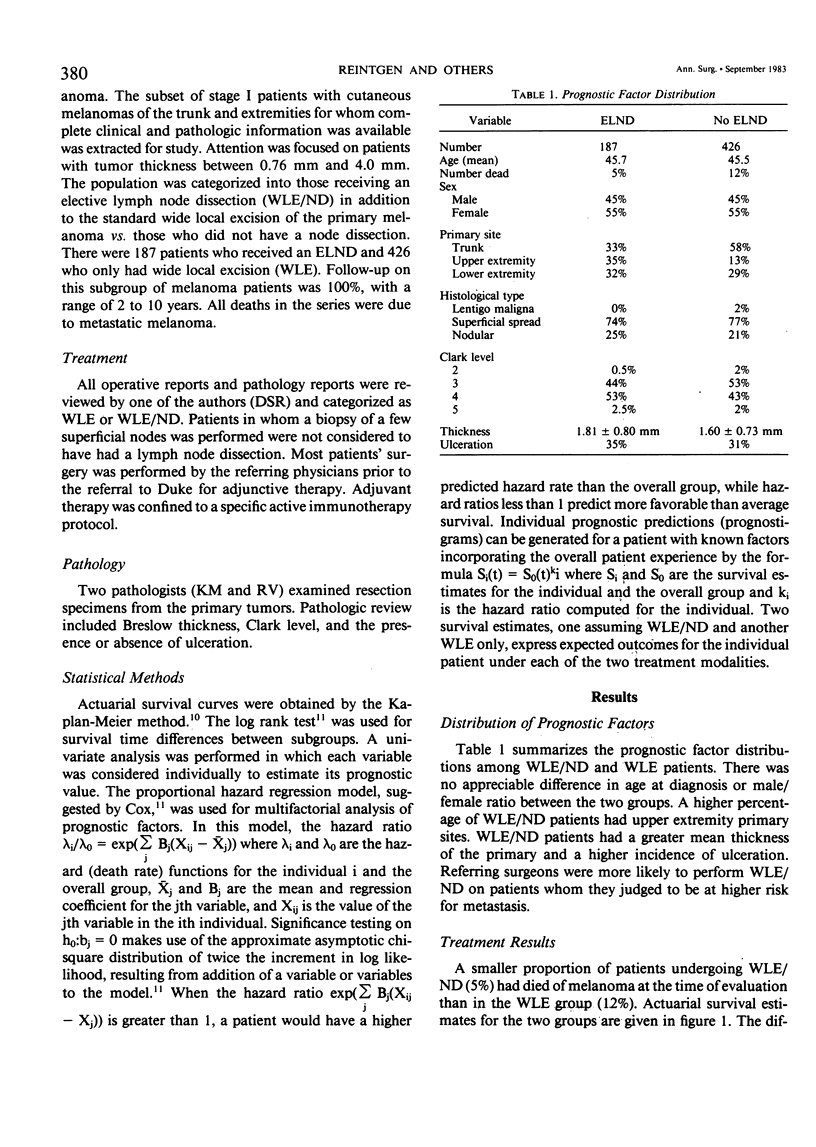
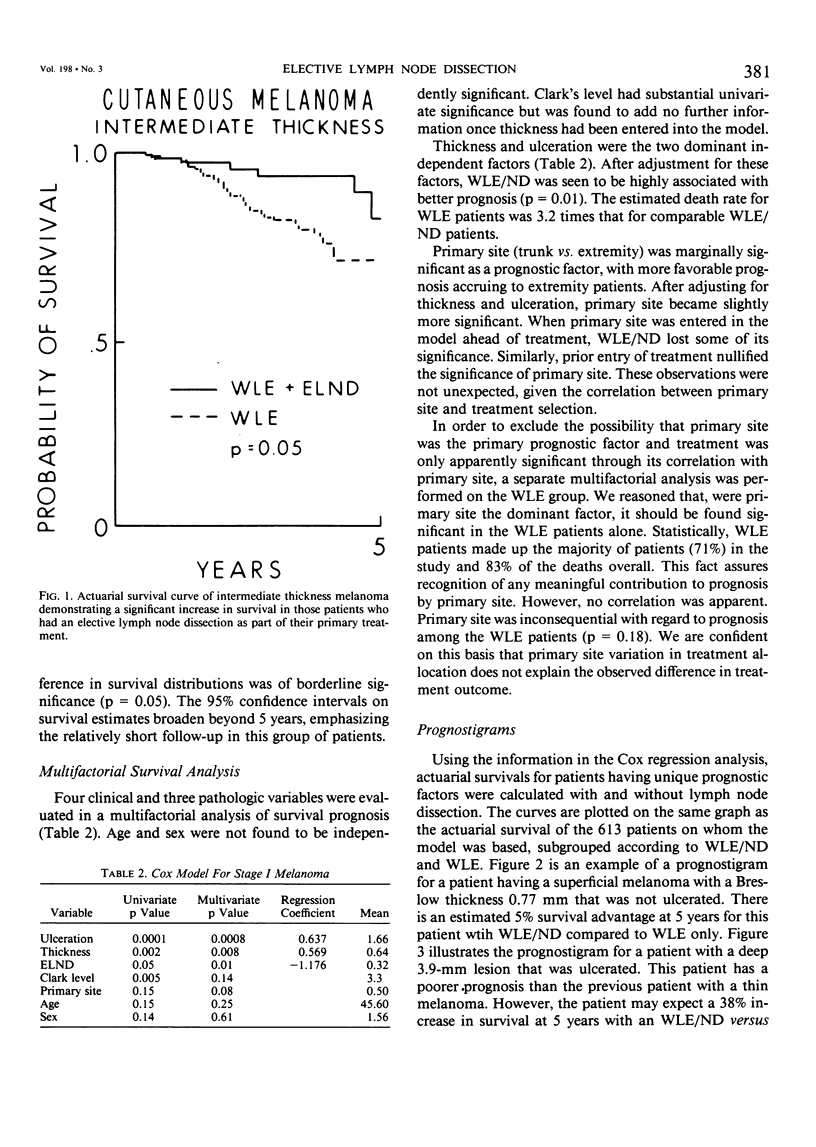
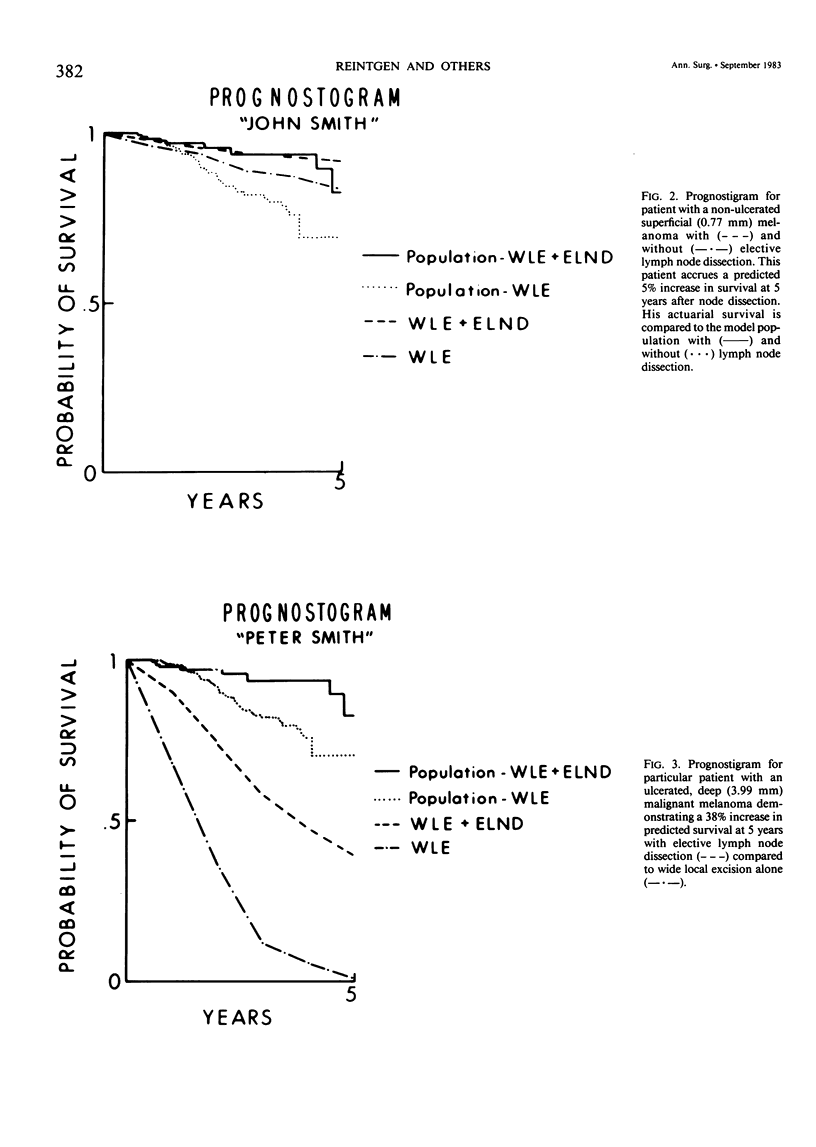
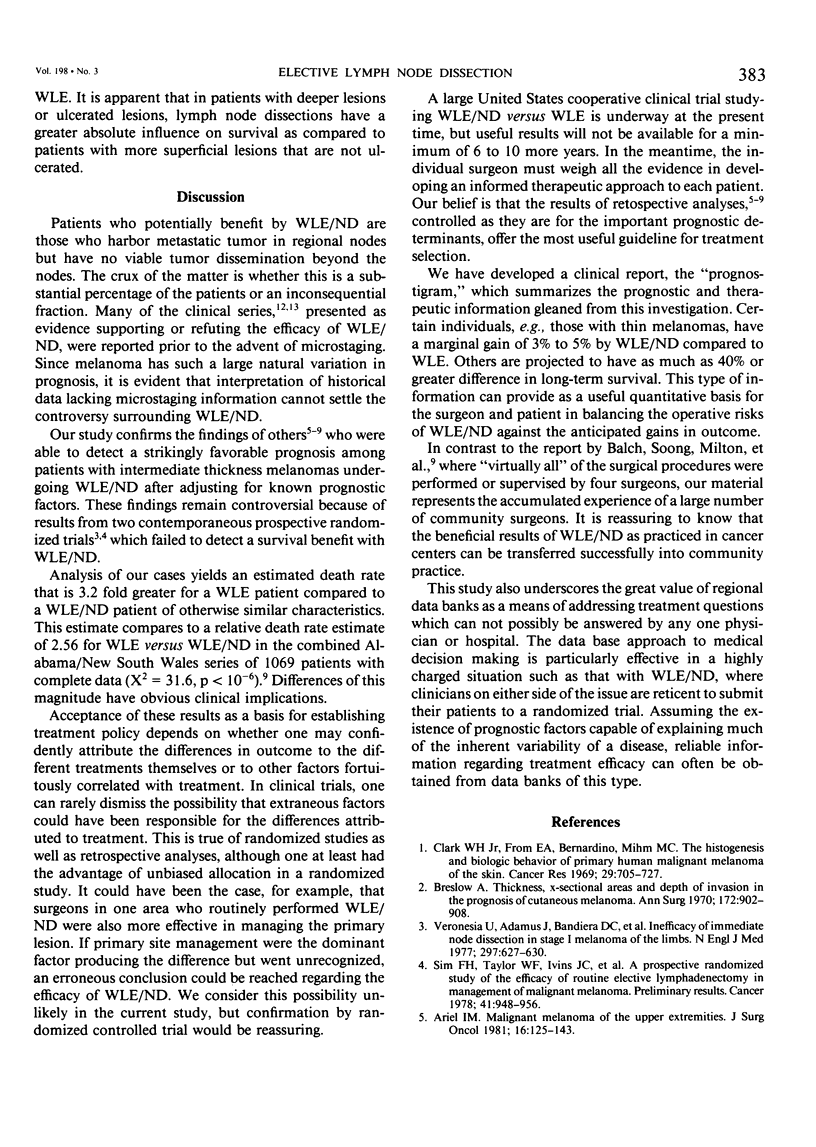
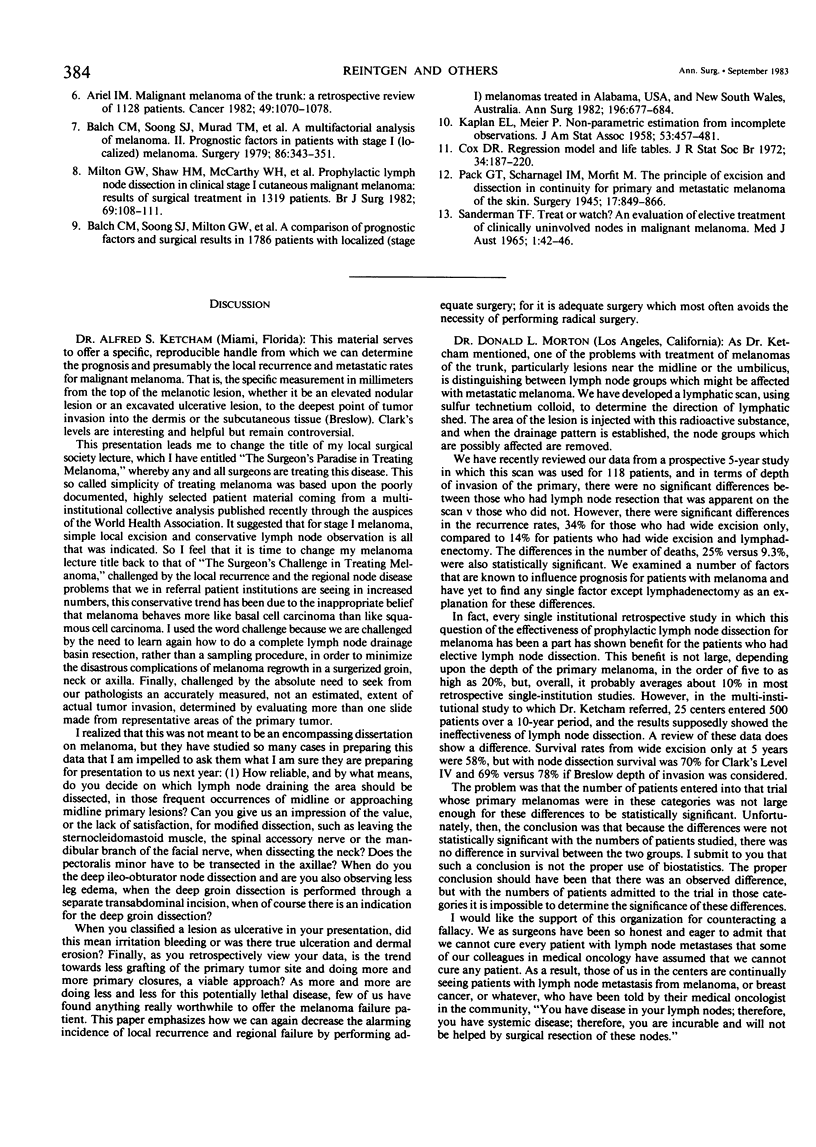
Selected References
These references are in PubMed. This may not be the complete list of references from this article.
- Ariel I. M. Malignant melanoma of the trunk: a retrospective review of 1128 patients. Cancer. 1982 Mar 15;49(6):1070–1078. doi: 10.1002/1097-0142(19820315)49:6<1070::aid-cncr2820490603>3.0.co;2-q. [DOI] [PubMed] [Google Scholar]
- Ariel I. M. Malignant melanoma of the upper extremities. J Surg Oncol. 1981;16(2):125–143. doi: 10.1002/jso.2930160204. [DOI] [PubMed] [Google Scholar]
- Balch C. M., Soong S. J., Milton G. W., Shaw H. M., McGovern V. J., Murad T. M., McCarthy W. H., Maddox W. A. A comparison of prognostic factors and surgical results in 1,786 patients with localized (stage I) melanoma treated in Alabama, USA, and New South Wales, Australia. Ann Surg. 1982 Dec;196(6):677–684. doi: 10.1097/00000658-198212001-00011. [DOI] [PMC free article] [PubMed] [Google Scholar]
- Balch C. M., Soong S. J., Murad T. M., Ingalls A. L., Maddox W. A. A multifactorial analysis of melanoma. II. Prognostic factors in patients with stage I (localized) melanoma. Surgery. 1979 Aug;86(2):343–351. [PubMed] [Google Scholar]
- Breslow A. Thickness, cross-sectional areas and depth of invasion in the prognosis of cutaneous melanoma. Ann Surg. 1970 Nov;172(5):902–908. doi: 10.1097/00000658-197011000-00017. [DOI] [PMC free article] [PubMed] [Google Scholar]
- Clark W. H., Jr, From L., Bernardino E. A., Mihm M. C. The histogenesis and biologic behavior of primary human malignant melanomas of the skin. Cancer Res. 1969 Mar;29(3):705–727. [PubMed] [Google Scholar]
- Milton G. W., Shaw H. M., McCarthy W. H., Pearson L., Balch C. M., Soong S. J. Prophylactic lymph node dissection in clinical stage I cutaneous malignant melanoma: results of surgical treatment in 1319 patients. Br J Surg. 1982 Feb;69(2):108–111. doi: 10.1002/bjs.1800690217. [DOI] [PubMed] [Google Scholar]
- SANDEMAN T. F. TREAT OR WATCH?AN EVALUATION OF ELECTIVE TREATMENT OF CLINICALLY UNINVOLVED NODES IN MALIGNANT MELANOMA. Med J Aust. 1965 Jan 9;1(2):42–46. [PubMed] [Google Scholar]
- Sim F. H., Taylor W. F., Ivins J. C., Pritchard D. J., Soule E. H. A prospective randomized study of the efficacy of routine elective lymphadenectomy in management of malignant melanoma. Preliminary results. Cancer. 1978 Mar;41(3):948–956. doi: 10.1002/1097-0142(197803)41:3<948::aid-cncr2820410324>3.0.co;2-z. [DOI] [PubMed] [Google Scholar]
- Veronesi U., Adamus J., Bandiera D. C., Brennhovd I. O., Caceres E., Cascinelli N., Claudio F., Ikonopisov R. L., Javorskj V. V., Kirov S. Inefficacy of immediate node dissection in stage 1 melanoma of the limbs. N Engl J Med. 1977 Sep 22;297(12):627–630. doi: 10.1056/NEJM197709222971202. [DOI] [PubMed] [Google Scholar]


